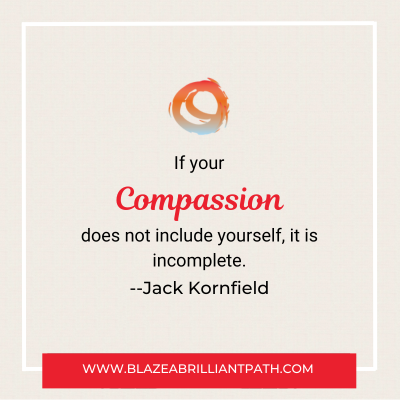
Readying yourself to heal your trauma as a woman seems like a daunting task. You’re not alone, though. Understanding what trauma is and the steps you can take to start your journey toward healing can take off a lot of the pressure.
The foundation of healing your past trauma or childhood trauma as a woman is to reconnect with yourself. This is the “you” part of your human consciousness. This is the part of yourself that is burdened by the pain of the past.
The path forward leads to setting yourself free from trauma, reconnecting with your unique spirit, and showing yourself the compassion and love you deserve.
What Does Healing Your Trauma Mean?
There are a few initial steps before the deep work can begin. First, you need to re-establish a feeling of physical and mental safety. You can move forward with your journey once you are mentally and physically safe.
Childhood trauma stems from birth to typically age ten, although many people can also relate to pre-birth situations. I have heard of many people who carry childhood trauma from when they were still in utero or the birthing process. This was a very tender time in your life, and trying to rush forward without this sense of security can cause complications or even re-traumatization.
You also need a willingness and readiness to face the trauma. This sounds simple, but it’s a tenacity you need with you for the entire journey. Coming face to face with your trauma as a woman is difficult, so knowing that you’re ready for that is important.
It’s crucial to acknowledge that your journey towards healing may not be linear. There will be ups and downs, moments of progress and setbacks. But the key is to keep moving forward with patience and self-compassion.
One important aspect of healing from childhood trauma is understanding how it has affected you. This can involve identifying triggers, recognizing patterns in your behavior or relationships, and acknowledging any underlying fears or insecurities.
Therapy can be a valuable tool in this process, as it provides a safe space to explore these complexities and work through them with the guidance of a trained professional.
Another important element in healing is building a strong support system. This can include loved ones, friends, mentors, or even online communities that can offer understanding, empathy, and encouragement.
Ultimately, healing from childhood trauma is a journey that looks different for everyone. It’s important to be patient with yourself and celebrate the small victories along the way. Remember to show yourself compassion and forgiveness for any setbacks that may occur. With time, effort, and support, it is possible to overcome the effects of childhood trauma and live a fulfilling life.
The next tools you need for this journey are genuine compassion for yourself and a willingness to accept the love and support you need and deserve. You need to understand and accept your own worthiness.
If someone asked you “Who do you love the most?” Could you list yourself as #1? –Blaze Lazarony
What 3 Steps Can You Take to Heal Your Trauma?
Healing is a process, and it takes time. Certain tactics and exercises may work great for you one day, but they may not be what you need on another day. It’s important to be flexible and considerate of yourself. It’s okay to need and use several different approaches to coping.
Here are a few things you can do to help you along your journey.
Step #1 to Heal Your Trauma-Gentle Daily Movement

This can be a walk, yoga, or just some basic stretching. Our bodies need to move to be healthy, and our brains need this movement, too. Otherwise, we start feeling stuck, stiff, sore, and depressed. Finding time to move your body gently, like walking or easy yoga, can help alleviate the physical symptoms of trauma. This gentle movement is beneficial for sleep and mental focus. It can also help regulate emotions and promote relaxation. So, why not take the first step on your healing journey by incorporating gentle daily movement into your routine?
Not only is gentle daily movement beneficial for our physical health, but it can also have a major impact on our mental well-being. When we experience trauma, our bodies often hold onto that pain in the form of tension and stiffness. This can lead to chronic pain and discomfort, making it difficult for us to function in our day-to-day lives.
Incorporating gentle daily movement allows us to release tension and stiffness, promote relaxation, and reduce physical symptoms of trauma. Exercise also helps to regulate emotions, as it releases endorphins, which can improve mood and reduce feelings of anxiety and depression.
Perhaps most importantly, engaging in gentle daily movement can be a powerful form of self-care. Taking the time to focus on our bodies and prioritize our well-being can help us feel more in control and empowered, especially when we may have felt helpless or out of control during times of trauma.
So, what should your routine look like? The key is to find activities that you enjoy and that make you feel good. This could include yoga, walking, swimming, dancing, or any other movement that brings you joy. It doesn’t have to be intense or long – even just 10 minutes a day can make a difference.
Remember to listen to your body and not push yourself too hard. Gentle daily movement should not cause pain or discomfort – it should leave you feeling refreshed and energized
The healing process can make it hard to muster up the energy needed to exercise; however, gentle movement provides many benefits throughout the day. When the mind is focused on doing something with your body, it is less focused on negative thoughts.
Step #2 to Heal Your Trauma-Give Yourself Time for Rest and Renewal

Taking the time to rest provides your brain the necessary interval to process the intricacies of your day-to-day life, fostering a mental environment conducive to processing your experiences, including trauma.
Both sleep and rest play pivotal roles in helping repair your body and rejuvenate your mind, acting as essential components of a healthy lifestyle. The average adult requires between 7 and 8 hours of sleep each night to function optimally. Without sufficient sleep, our bodies and minds are susceptible to various detrimental physical and psychological effects, including increased stress, impaired cognitive functions, and a weakened immune system.
So, how much sleep is recommended each night to avoid these adverse effects? For most adults, 7 to 8 hours of good-quality sleep each night is ideal. Given their developmental needs, children require considerably more—typically between 9 to 12 hours of sleep at night, depending on their age. This suggests that, over a 24-hour period, your body should experience approximately 6-7 complete rest cycles to achieve optimal health and function.
If you are going to bed but not securing a full night’s rest, consider adjusting your sleep schedule slightly. For instance, if waking up an hour earlier and going to bed an hour later helps you achieve a more restful night, it’s worth experimenting with. If your usual bedtime is 11 p.m., try waking up at 9 a.m. instead of 8 a.m. for the next month or two. This minor adjustment can help you align with your body’s natural rhythms, improving sleep quality.
It’s essential to tune into your body’s natural sleep-wake cycles and understand your unique sleep needs. Our bodies are incredibly unique, and recognizing the nuances of our individual sleep cycles can be transformative. By paying close attention to how you feel during the day, you can identify patterns and make informed decisions about your sleep habits, ensuring you get the restorative rest you need to thrive.
Step #3 to Heal Your Trauma-Journaling or Writing a Letter
Talking to yourself might seem odd at first glance, but it’s a natural and healthy part of our mental processes. Our brains are inherently designed for self-talk, which explains why rumination and negative self-talk can harm our well-being. It’s a fundamental function of the brain to engage in this internal dialogue, but at times, mental health issues such as depression or anxiety can hijack your inner voice, steering it into harmful territory.

Moreover, journaling or writing a letter to your past self or inner child can be a powerful tool in this healing process. It allows you to focus on self-compassion, gently guiding your inner voice to adopt a tone of kindness and understanding towards yourself. This practice helps heal wounds from the past and brings you closer to embracing your whole Self. By fostering a relationship with yourself that’s built on kindness, patience, and love, you embark on a transformative journey toward self-discovery and healing. Remember, how we talk to ourselves matters profoundly, and nurturing a compassionate inner voice is a key step in overcoming trauma and finding peace.
For a quick start, click here for a FREE PDF entitled 29 Days of Journaling for Women. It will help you get started writing and healing.
A Bonus Step to Heal Your Trauma-Seek Out a Trained Therapist or Counselor

We will embark on this journey with a positive and compassionate approach, focusing on your well-being and progress. It’s important to remember that, as a woman, you are entitled to this level of care and support. You deserve to heal in a nurturing environment that acknowledges and addresses your needs. Let’s work together to navigate this path towards recovery, ensuring you feel empowered and supported every step.
If you are tired of feeling weighed down by your past trauma, it’s time to break free and start the healing process. We are here to support you with evidence-based strategies that have helped countless women recover from their pain and reclaim their lives. Whether you’ve experienced abuse, loss, or any other form of trauma, we’re here to listen, understand, and guide you toward a brighter future. Start your healing journey today and regain your sense of inner peace and joy.
Schedule your free consultation now. We promise you won’t regret it.





